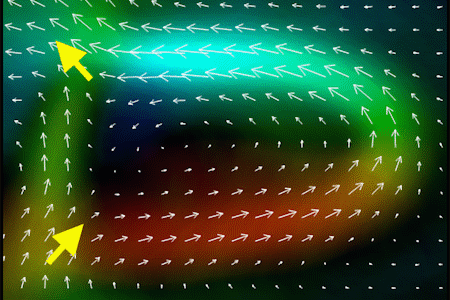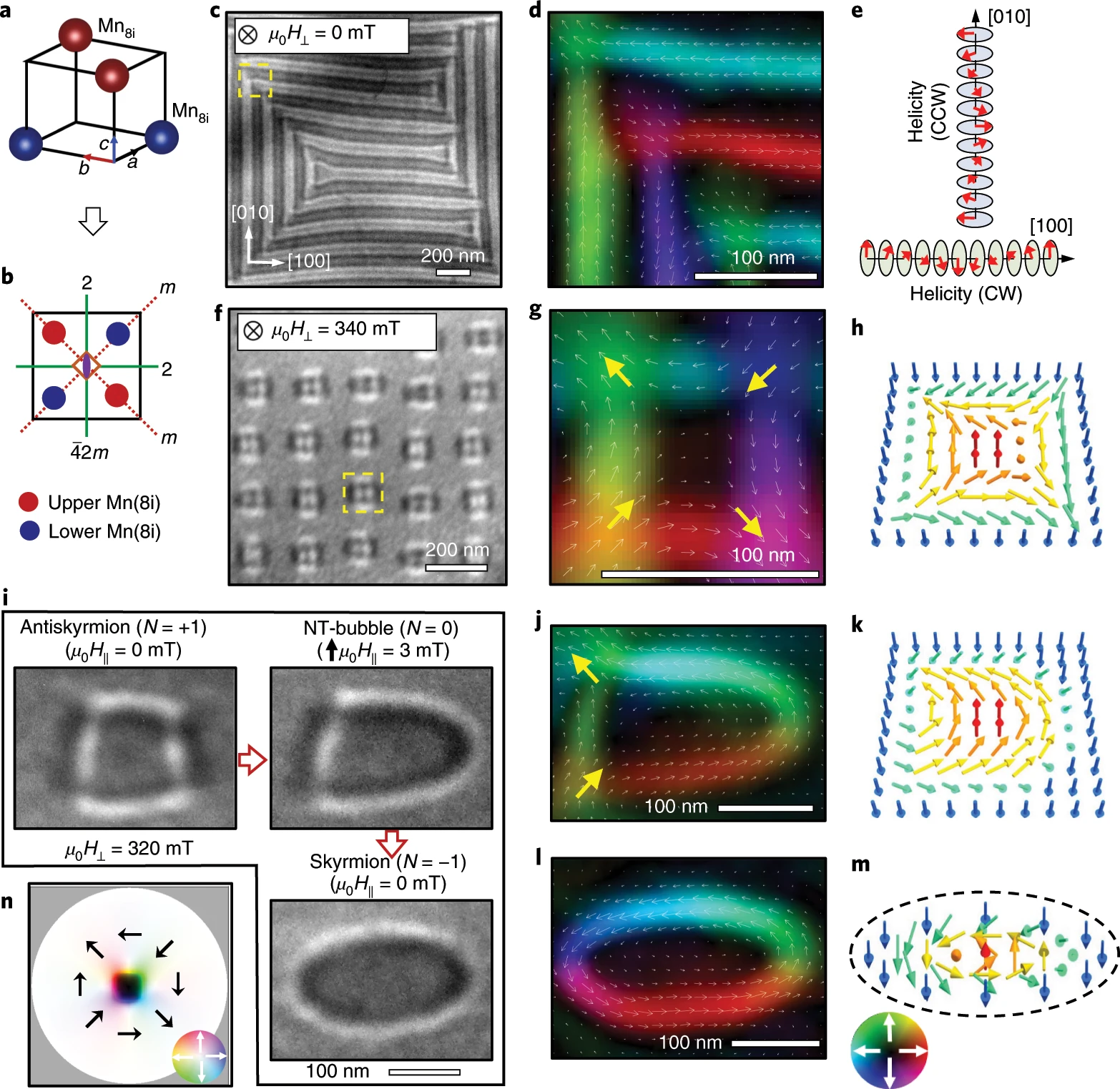Magnetic vortices, bits of the future Control of magnetic vortices called skyrmions could lead to advanced electronics

For the first time, researchers successfully manipulated and controlled minute magnetic structures called skyrmions in ways that suggest they could be useful in electronic applications.
There are a number of emerging technologies in the field of electronics that may end up being the next big thing. One such promising avenue is what is known as spintronics — this is where digital information would be encoded in the spin of electrons, a property relating to angular momentum, rather than their charge. This offers advantages of speed, efficiency and robustness, but ways to achieve it are still being explored.
Professor Naoto Nagaosa from the Department of Applied Physics at the University of Tokyo and his team have recently made some progress. Using a specially created magnetic material and carefully tuned magnetic fields, they have demonstrated a fine degree of control over magnetic vortices known as skyrmions, and their equal, opposite counterparts, antiskyrmions.
“Spintronics devices may well make use of skyrmions and antiskyrmions as information carriers or bits,” said Nagaosa. “These can be manipulated at high speed with delicate operation of magnetic fields. This research is not just about downstream applications, though; it can offer a new perspective on fundamental physics.”
Although skyrmions and antiskyrmions have been observed before, this is the first time that anyone has been able to coax one into becoming the other, something that is useful for investigating their underlying geometric nature. In order to achieve this, the team created a special kind of magnet called a Heusler magnet made from manganese, platinum, palladium and tin.
The Heusler magnet had to be made extremely thin in order for direct observations to be made. A slice 100 nanometers thick was imaged with a Lorentz transmission electron microscope. High resolution images taken reveal the different forms of the skyrmions that Nagaosa and team hoped to see.
“It was a treat to make the first observations of these peculiar square lattice vortices,” said Nagaosa. “Control of magnetic vortices is a huge challenge owing to their minute size and instability due to temperature. But with appropriate materials and finely tuned magnetic fields, we made it happen.”

Electron microscope images of skyrmions. Electron microscopy images of skyrmions (grayscale) allow colored magnetization texture images to be inferred. Image © 2020 Nagaosa et al.
Papers
Licong Peng, Rina Takagi, Wataru Koshibae, Kiyou Shibata, Kiyomi Nakajima, Taka-hisa Arima, Naoto Nagaosa, Shinichiro Seki, Xiuzhen Yu & Yoshinori Tokura, "Controlled transformation of skyrmions and antiskyrmions in a non-centrosymmetric magnet," Nature Nanotechnology 15, pages181–186(2020): January 20, 2020, doi:10.1038/s41565-019-0616-6.
Link (Publication )
)





